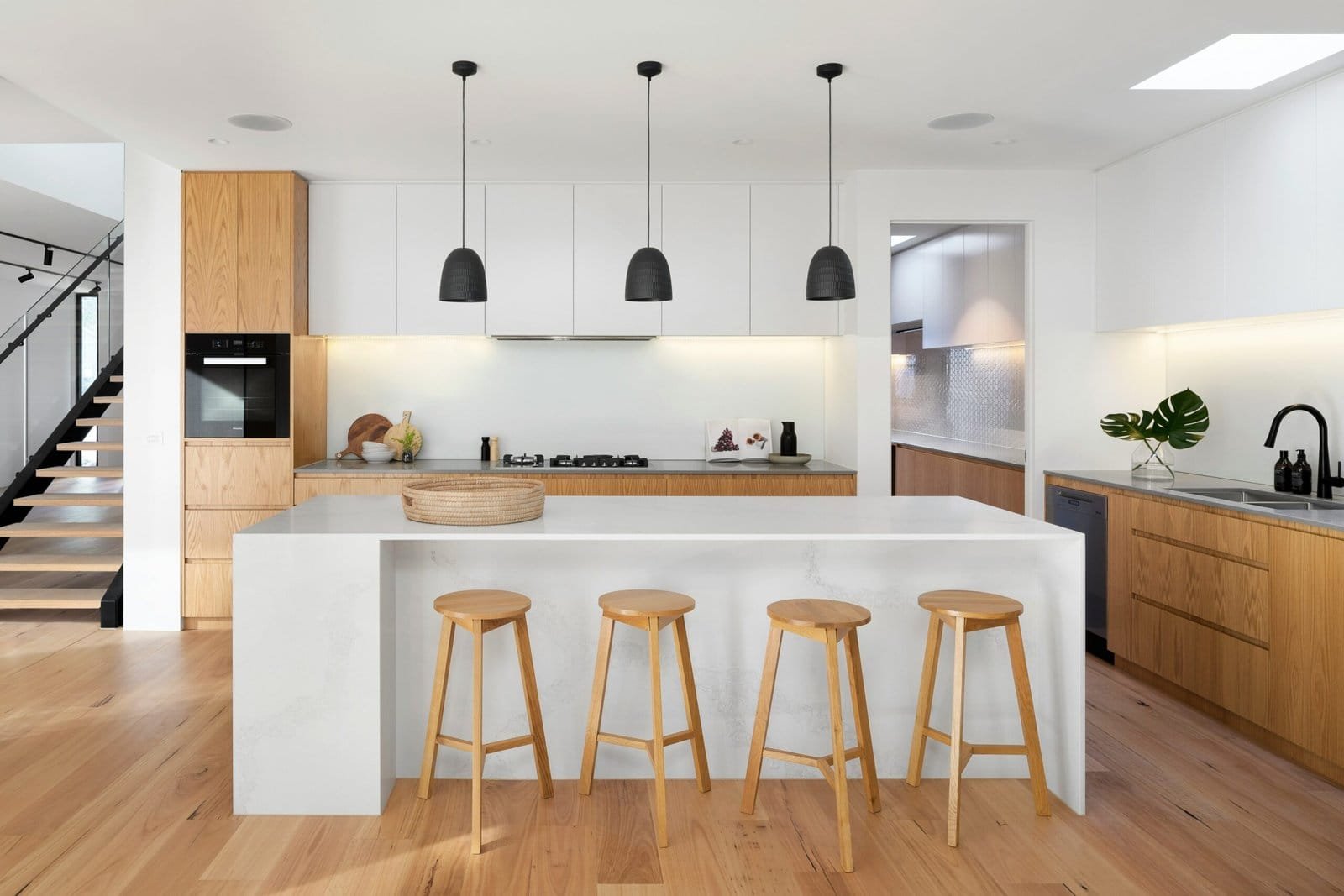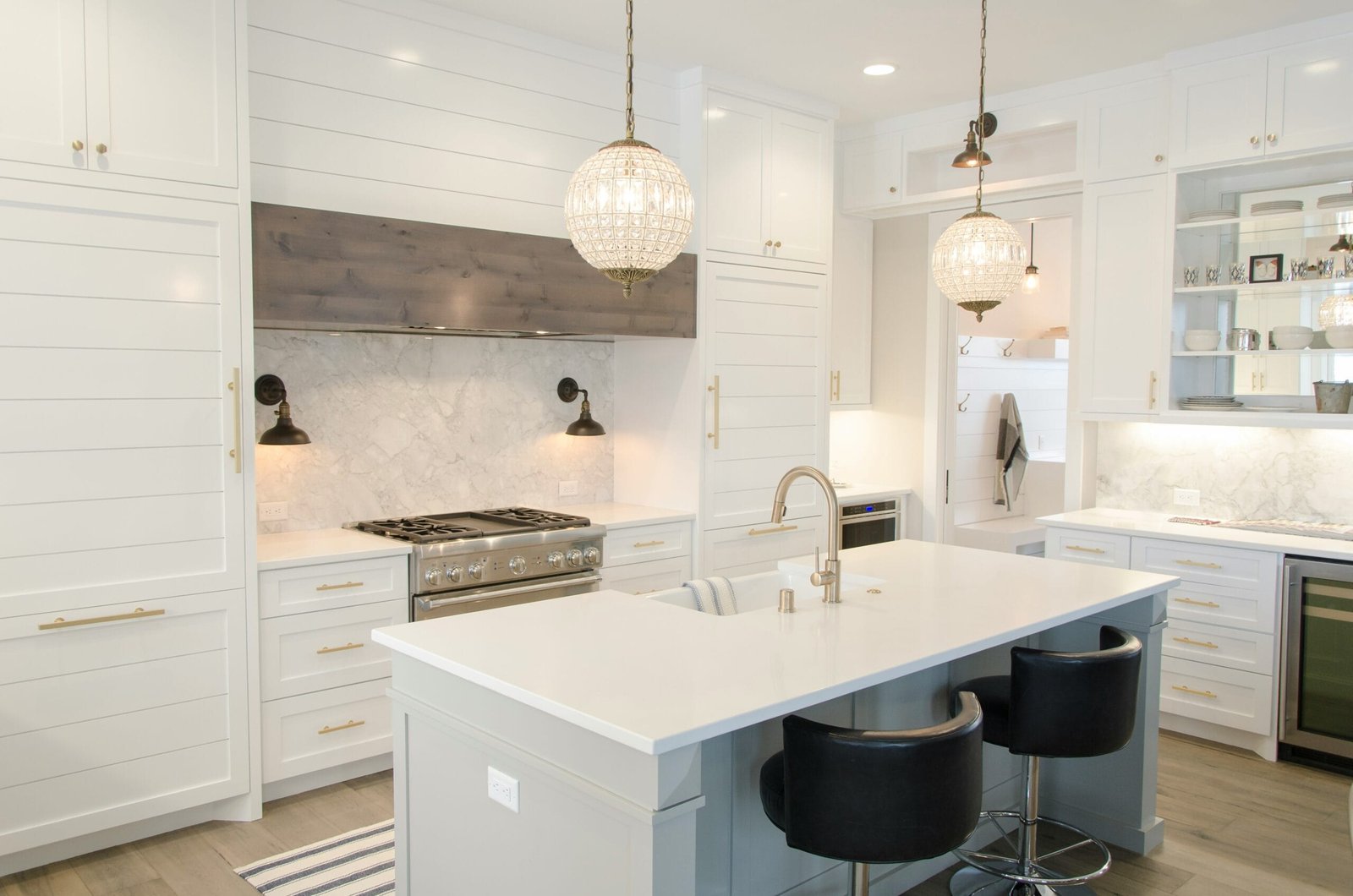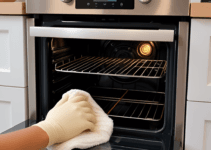Planning a kitchen renovation? Understand the costs involved, from materials to labor, and learn how to set a realistic budget. Discover smart shopping tips, DIY options, and budget-friendly alternatives to high-end features. Prepare for unforeseen expenses and timelines to ensure your project stays on track. Explore real homeowner success stories that illustrate how to achieve stylish and functional kitchen spaces without breaking the bank. Equip yourself with the knowledge to make informed decisions for your kitchen remodel!
Understanding Kitchen Renovation Costs
When considering a kitchen renovation, understanding the various factors that influence the overall cost is essential for effective budgeting. A kitchen renovation encompasses a multitude of elements, including materials, labor, and the project’s scope. Each of these components contributes to the total expenditure, and a well-informed homeowner can better anticipate the financial commitment required.

One of the primary costs in a kitchen renovation comes from the choice of materials. High-quality cabinets, countertops, and flooring can significantly elevate the overall price, while budget-friendly options allow for a more economical approach. It is important to assess the materials needed based on durability, aesthetic appeal, and long-term value. Additionally, appliances must be factored into the budget, as modern kitchens typically require updated technology that can range from moderately priced to luxurious models.
Please, read our post and do not forget to check our YouTube channel “Grig Stamate”:
https://www.youtube.com/@GrigStamate
You will find there, thousands of designing, furnishing, and decorating ideas for your home interior and outdoors.
Allow me to mention three of them:
Modern Open Space Concept Ideas / Kitchen and Dining Room Combination (Part 1) (video)
Best Modern Kitchens | Interior Design Ideas #1 (video)
Beautiful Kitchens, A Splash of Nordic Design | Scandinavian Style Design #7 (video)
Labor costs are another critical factor, often underestimated by homeowners. Skilled tradespeople, including carpenters, electricians, and plumbers, command a substantial wage, particularly in regions where construction work is in high demand. Obtaining multiple quotes from contractors can provide a clearer picture of labor expenses and help in negotiating favorable rates. Furthermore, the complexity of the renovation can influence labor costs, with larger or more intricate designs necessitating more time and expertise.
The scope of the project significantly impacts the total renovation cost. A minor update, such as repainting cabinets or changing fixtures, will naturally be less expensive than a complete overhaul involving a layout change or structural modifications. Homeowners should carefully evaluate their goals for the renovation and establish a clear plan to guide both the design and financial aspects. By recognizing these various cost factors, individuals can make informed decisions while staying within their desired budget.
Setting Your Renovation Budget
Establishing a budget for your kitchen renovation is an essential step in the planning process, acting as a comprehensive roadmap that guides your project from inception to completion. The first step in determining your renovation budget involves assessing your goals and needs. Consider what aspects of your current kitchen are unsatisfactory and what improvements can enhance both functionality and aesthetic appeal. This might include upgrading appliances, replacing countertops, or redesigning the layout for better flow.
It is crucial to align your renovation desires with your financial capability. Start by evaluating the equity in your home and any relevant financing options. Home equity loans or lines of credit can offer flexible funding solutions, but it is vital to calculate monthly repayments and potential impacts on your overall budget. Additionally, researching current market trends and costs associated with materials and labor will provide a clearer picture of realistic expenditure.
Furthermore, when drafting your budget, it is prudent to include a 10% to 20% buffer for unexpected costs. Renovations can often conjure unforeseen challenges, such as structural issues, plumbing updates, or electrical upgrades that may not have been anticipated at the outset. By overestimating your budget slightly, you create a financial cushion that helps prevent stress and complications that may arise from surprise expenses, ensuring your renovation project remains on track.
Lastly, consistently review and adjust your budget as needed throughout the renovation process. Engage with contractors and suppliers to gain insights into any necessary changes to your budget to accommodate evolving project requirements. A well-structured budget not only ensures that your kitchen renovation aligns with your vision but also sets a solid foundation for a successful transformation.
Cost Breakdown: What You’re Paying For
Kitchen renovations can be a significant investment, often representing one of the most substantial expenditures in a home improvement project. A detailed understanding of the costs associated with a kitchen renovation is crucial for homeowners to make informed decisions and stay within budget. This section will delineate the primary components that contribute to the overall costs of a kitchen renovation.
One of the most substantial expenses is often the appliances. When upgrading your kitchen, new refrigerators, ovens, and dishwashers can vary widely in price, with high-end options running into thousands of dollars. It’s essential to consider both functionality and aesthetics when selecting appliances, as they are central to the kitchen’s overall appeal.
Cabinets are another major expense, accounting for a significant portion of the renovation budget. The cost can depend on the materials used, with solid wood cabinets typically being more expensive than laminate or particleboard options. Additionally, customization and installation can further increase expenses.
Countertops are also a crucial aspect of kitchen renovations. Homeowners can choose from a variety of materials, such as granite, quartz, wood, or laminate, each bringing different costs and maintenance requirements. The choice of countertop can significantly affect the kitchen’s functionality and visual impact.
The flooring is another factor that should not be overlooked. Options range from tile and hardwood to luxury vinyl, each offering different durability and aesthetic qualities. Installation costs can also vary depending on the material selected and the complexity of the layout.
Lastly, labor costs can differ based on the complexity and scale of the renovation project. Hiring professional contractors may result in higher upfront costs but can guarantee quality workmanship and adherence to local building codes. Understanding these detailed cost components will empower homeowners to allocate their budgets effectively and prioritize their renovations according to their needs.
DIY vs. Hiring Professionals: What’s Best for Your Wallet?
When it comes to kitchen renovation, one of the most significant decisions you will face is whether to undertake the project yourself or hire professionals. DIY projects can seem appealing at first glance, promising substantial savings and a personalized touch. However, several factors must be considered before diving into self-led renovations.
One of the primary advantages of DIY kitchen renovations is the potential for cost savings. By eliminating labor costs, homeowners might find themselves able to allocate more funds toward high-quality materials or additional upgrades. Furthermore, the DIY approach allows for complete control over each element of the project, giving you the freedom to make personalized design choices. However, this appealing cost-saving aspect can be misleading, as the DIY route can also lead to unintended financial consequences.
One significant risk associated with DIY renovations is the potential for costly mistakes. Inexperienced homeowners may underestimate the complexity of certain tasks, leading to errors that require professional intervention to correct. For example, plumbing and electrical work can pose significant challenges, and any mishaps in these areas could result in expensive repairs. Additionally, lack of expertise may contribute to projects taking longer than anticipated, further escalating costs.
On the other hand, hiring professionals can provide peace of mind. With their expertise and experience, professionals can efficiently handle various aspects of the renovation, ensuring that everything complies with local building codes and safety regulations. Although the initial investment may be higher, professionals can potentially save you money in the long run by preventing costly mistakes and delays.
Ultimately, the decision between DIY and hiring professionals depends on your budget, skill level, and the complexity of the renovation task. Carefully assessing your capability and potential risks associated with your kitchen renovation will help you make a well-informed decision for your financial health.
Smart Shopping: Where to Save and Where to Splurge
When embarking on a kitchen renovation project, discerning where to allocate your budget can significantly impact the overall cost. Understanding which elements of your new kitchen warrant a splurge and which can be adjusted to save money is critical in achieving a successful remodel without overspending. The kitchen is a central hub of homes, and its design and functionality should reflect both quality and cost-efficiency.
One area where homeowners can save is on countertops. While granite and quartz are popular choices, opting for laminate countertops can deliver a similar aesthetic at a fraction of the price. Modern laminate options are available in various styles and finishes that can mimic more expensive materials, allowing for a stylish yet budget-friendly kitchen. Additionally, consider using alternative materials for backsplashes, such as peel-and-stick tiles, which provide a textural upgrade without the hefty price tag of custom tiling.
Conversely, when it comes to appliances, quality should take precedence over price. Investing in durable, energy-efficient appliances will not only enhance the functionality of your kitchen but also save you money on energy bills in the long run. Brands known for reliability and performance may have a higher upfront cost, but these products often come with warranties and lower maintenance costs. Furthermore, focusing on crucial appliances, such as refrigerators and ovens, is wise because these elements serve as the backbone of kitchen operations.
Finally, cabinetry is another crucial aspect to consider. Although custom cabinetry can be costly, ready-to-assemble or semi-custom options often provide an excellent balance between price and quality. By strategically allocating your budget to prioritize essential components, you can create a beautiful kitchen that meets your needs without exceeding your financial limits.
Budget-Friendly Alternatives to High-End Features
When embarking on a kitchen renovation, many homeowners are drawn to the allure of high-end features that can elevate the overall aesthetic of their culinary space. However, achieving a luxurious look does not always necessitate a heavy financial investment. There are numerous budget-friendly alternatives available that can encapsulate the chic charm of a gourmet kitchen while keeping expenses in check.
One of the most impactful changes a homeowner can make is the choice of backsplash. Instead of opting for costly imported tiles or intricate mosaics, consider using peel-and-stick backsplashes. Available in a variety of styles, these affordable options mimic the appearance of high-end materials, such as subway tile, glass, or stone, without the labor-intensive installation and price tags. Moreover, they are easy to remove and replace, allowing for future updates with minimal hassle.
Eco-friendly fixtures are another way to infuse opulence into kitchen design on a budget. Look for affordable yet stylish faucets that not only enhance functionality but also contribute to water conservation. There are many options that feature modern designs and finishes, such as brushed nickel or matte black, enabling homeowners to achieve a sleek and contemporary look. Furthermore, consider LED lighting as an alternative to traditional fixtures; not only does it reduce energy costs, but it also allows for creative illumination that can enhance the ambiance of the kitchen.
Countertops are often considered a major expense in kitchen renovations, yet there are alternatives that carry a lower price tag while still achieving a fashionable look. Materials such as laminate or butcher block are increasingly popular, providing a warm and inviting appearance reminiscent of more expensive stone surfaces. Their cost-effectiveness, along with their ease of maintenance, makes them an ideal choice for budget-conscious homeowners seeking high-end aesthetics without overspending.
Navigating Unforeseen Expenses
One of the significant challenges homeowners face during a kitchen renovation is the occurrence of unforeseen expenses. It is a well-known fact that even the best-laid plans can go awry. Unexpected repairs, supply chain disruptions, or changes in design can result in costs that surpass initial budgets. To mitigate these financial surprises, it is essential to develop strategies that prepare you for potential issues before they arise.
First and foremost, allocating a contingency fund is crucial. Financial experts often recommend setting aside 10-20% of your total renovation budget for unforeseen expenses. This fund can serve as a financial cushion, allowing you to address issues without derailing the entire project. For instance, if you discover plumbing issues during demolition, the contingency fund can help cover repairs and keep your project timeline intact.
Another important step is to conduct thorough pre-renovation inspections. Engaging a professional inspector before beginning your renovation can uncover potential problems such as outdated electrical systems, hidden water damage, or structural concerns. Identifying these issues in advance can help you estimate the costs more accurately, reducing the likelihood of unexpected expenses during the renovation process.
In addition to proactive measures, maintaining open communication with your contractor is essential. Regular updates can help you stay informed about any issues encountered on-site, allowing for swift decision-making. Moreover, it is advisable to choose high-quality materials and fixtures. While they may incur a higher upfront cost, they often lead to fewer repairs or replacements over time, ultimately saving you money in the long run.
Remember, while unforeseen expenses can be daunting, being prepared and adopting a strategic approach can help you navigate these challenges effectively, ensuring your kitchen renovation stays on budget.
Timelines: How Long Will Your Renovation Take?
When embarking on a kitchen renovation, one of the most significant considerations is the timeline associated with the project. A realistic timeline can vary depending on numerous factors, including the scale of the renovation, the complexity of the design, and the availability of materials and skilled labor. Typically, a complete kitchen renovation can take anywhere from four to twelve weeks. For smaller undertakings such as countertops or cabinetry changes, the process may only require a couple of weeks. However, larger projects involving structural changes or extensive plumbing and electrical work can extend beyond the twelve-week mark.
Staying on schedule often involves coordinating with multiple tradespeople, including plumbers, electricians, and contractors, each with their own availability and lead times. A delay from one trade can have a domino effect, impacting the overall completion of the project. For instance, if the backsplash installation is postponed due to delayed tile delivery, it can hinder the countertop installation, leading to further timeline extensions. Therefore, effective communication and planning between all parties are crucial.
Moreover, considering the current market dynamics in the construction industry, material supply delays may also play a role in the renovation timeline. It is prudent to account for potential delays when budgeting for your kitchen renovation. It is beneficial to build a buffer into your schedule to accommodate unforeseen circumstances, thereby reducing stress and ensuring that your project can proceed as smoothly as possible.
In summary, understanding and planning for the timelines involved in a kitchen renovation can significantly affect costs and the overall experience. A well-organized timeline can lead to smoother coordination of trades and a more satisfying renovation outcome.
Success Stories: Real People, Real Renovation Budgets
Many homeowners embark on kitchen renovations with dreams of a beautiful and functional space, only to be met with challenges along the way. However, numerous success stories illustrate that it is possible to complete these projects within a reasonable budget while achieving impressive results. One such example comes from a couple in suburban Atlanta, who transformed their outdated kitchen into a modern culinary haven for just $15,000. They began by establishing a comprehensive plan and sticking to it, opting for a refreshing paint job instead of expensive new cabinetry. This approach provided them with a fresh feeling without overshooting their budget.
Another inspiring case is that of a single mother in Chicago who faced the daunting task of renovating her kitchen for only $10,000. By prioritizing her spending, she replaced outdated appliances with energy-efficient ones and selected affordable yet stylish vinyl flooring. She also utilized social media to source local artisans who provided quality work at competitive prices. This strategy not only allowed her to create an inviting space but also kept her finances on track.
Learning from these real-life stories reveals several practical tips for homeowners. First, setting a clear budget from the beginning can prevent overspending. Categories for expenses should be established, including materials, labor, and permits. Second, consider DIY options where feasible, as personal involvement can reduce costs substantially. Third, flexibility in design choices—like mixing high-end fixtures with budget-friendly cabinetry—can achieve a chic look without breaking the bank. By prioritizing needs over wants, the risk of financial strain diminishes significantly while still presenting an appealing kitchen that meets the family’s style and functional requirements.
Other related posts from our website:
https://howtobuildahouseblog.com/6-tricks-i-use-to-display-pans-in-a-kitchen/
https://howtobuildahouseblog.com/should-i-extend-my-kitchen-pros-cons-and-the-alternatives/
https://howtobuildahouseblog.com/50-best-modern-kitchen-dining-areas-design-trends-and-inspiration/
Thank you so much for your attention.
Stay tuned. We will upload many other amazing posts to our website and videos onto our YouTube channel.
Thank you so much.
for your time and attention.
Best Regards
See you at another post,
Bye, Bye


No Responses